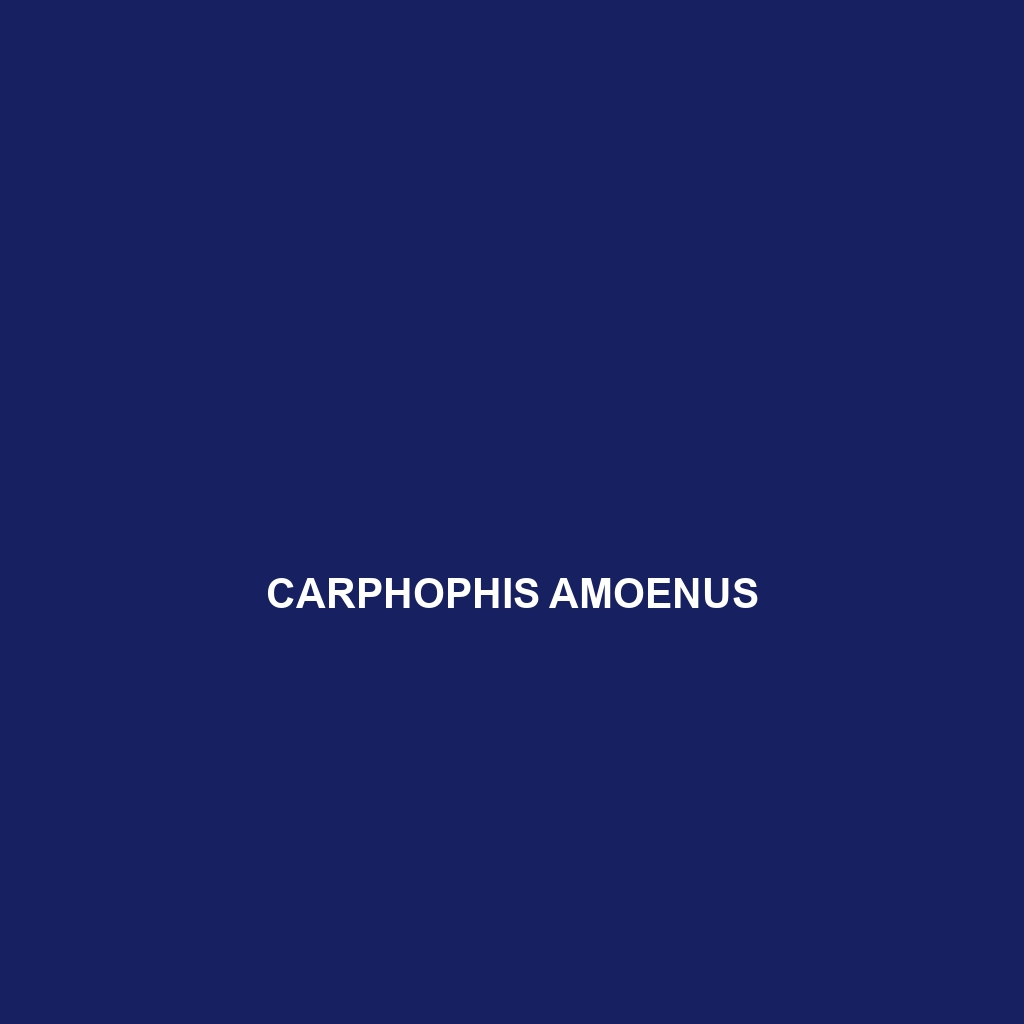The Delma elegans, or Elegant Delma, is a medium-sized lizard native to southeastern Australia, featuring a sleek body with smooth, glossy scales that range from light brown to grey. Known for its burrowing behavior and vibrant blue-green tail, this fossorial species plays a vital role in controlling insect populations and faces conservation challenges due to habitat loss.
Tag: fossorial species
Carphophis amoenus
The Eastern Worm Snake (Carphophis amoenus) is a secretive, fossorial species native to eastern North America, known for its slender, smooth body that typically ranges from 18 to 30 inches in length, with a light brown or gray coloration and a creamy belly. This harmless snake plays a vital role in soil health by preying on invertebrates like earthworms and slugs while contributing to soil aeration and nutrient cycling.
Brachyurophis australis
<p><b>Brachyurophis australis</b>, or the eastern smooth snake, is a fossorial species native to southeastern Australia, thriving in sandy woodlands and coastal heath. Known for its slender body and effective camouflage, this nocturnal predator primarily preys on small reptiles and plays a crucial role in its ecosystem.</p>
Brachymeles tungaoi
Discover the unique Brachymeles tungaoi, a legless lizard native to the tropical forests of Mindanao, Philippines. This small, nocturnal species thrives in humid environments, feeds on invertebrates, and plays a crucial role in its ecosystem while currently facing vulnerabilities due to habitat loss.
Brachymeles samarensis
Discover the Brachymeles samarensis, an endangered fossorial species native to the tropical forests of Samar Island in the Philippines, showcasing a unique adaptation for a subterranean lifestyle with a distinctive brown to dark green coloration and notable nocturnal behaviors. This vital ecosystem contributor thrives on small invertebrates while playing a crucial role in soil aeration and nutrient cycling.
Brachymeles muntingkamay
Discover the unique Brachymeles muntingkamay, often called the "blind skink," a Vulnerable species native to the Philippines that thrives in humid forests. With its sleek, worm-like body, reduced limbs, and diet primarily consisting of small invertebrates, this nocturnal reptile plays a crucial role in controlling insect populations and maintaining soil health.
Atractus marthae
Atractus marthae, or the Marth’s snake, is a slender, nocturnal species native to the rainforests of Colombia and Venezuela, characterized by its dark brown or black striped pattern on a beige background. This vulnerable species plays a vital role in its ecosystem by controlling invertebrate populations and relies on camouflage for protection in its lush, biodiverse habitat.
Bachia whitei
Discover the fascinating Bachia whitei, a slender, fossorial species native to the dry forests and savannas of northeastern Brazil, known for its unique burrowing abilities and vital role in controlling insect populations while exhibiting distinctive light brown to gray patterns for camouflage. This vulnerable species thrives in sandy soils, primarily feeding on small insects and arachnids, with a seasonal breeding cycle during the rainy months.
Atractus vittatus
Atractus vittatus, or the striped ground snake, is a slender, nocturnal species found in the tropical rainforests of Central and South America, characterized by its distinctive pattern of dark and light stripes. This non-venomous snake plays a vital ecological role by preying on invertebrates and contributing to soil health, all while blending seamlessly into its humid forest habitat.
Antillotyphlops catapontus
Discover the Antiguan blind snake (Antillotyphlops catapontus), a small, fossorial species native to Antigua, known for its smooth, cylindrical body, tiny non-functional eyes, and a diet primarily consisting of ants and termites. This nocturnal serpent plays a crucial role in controlling insect populations and aerating the soil in its tropical habitat.









